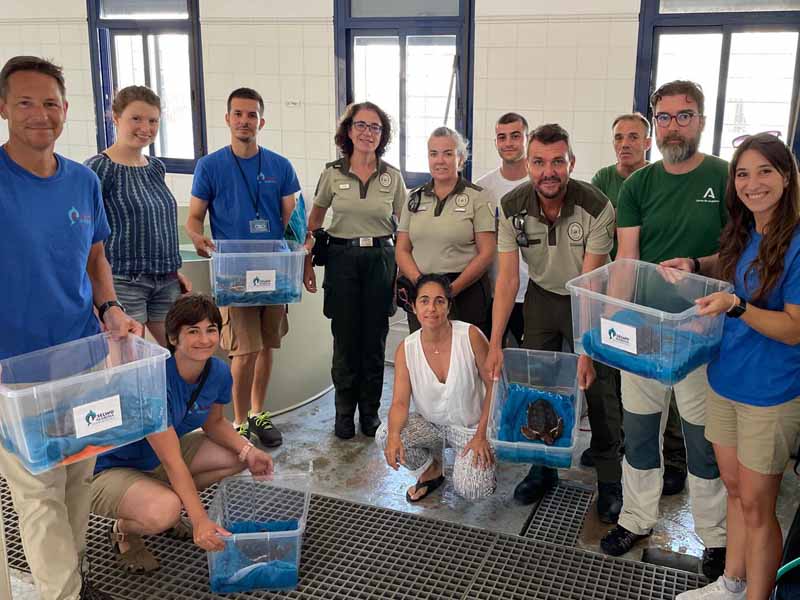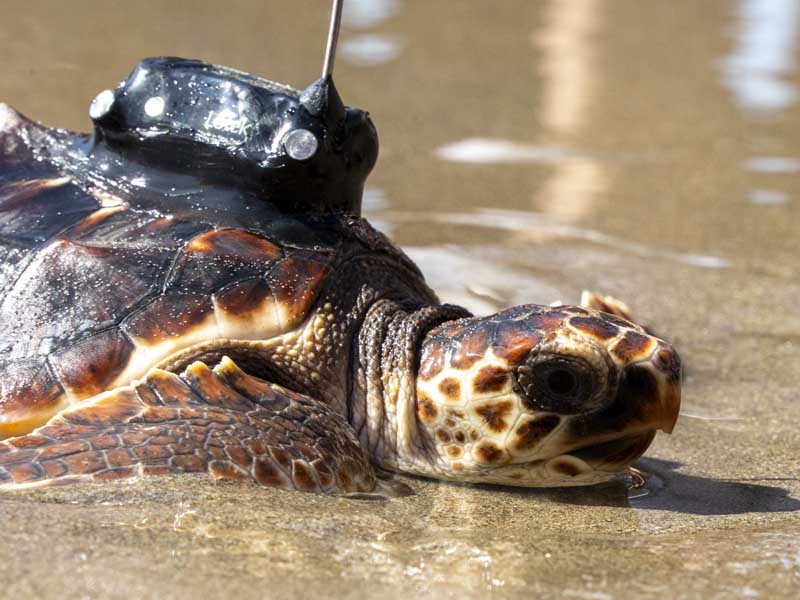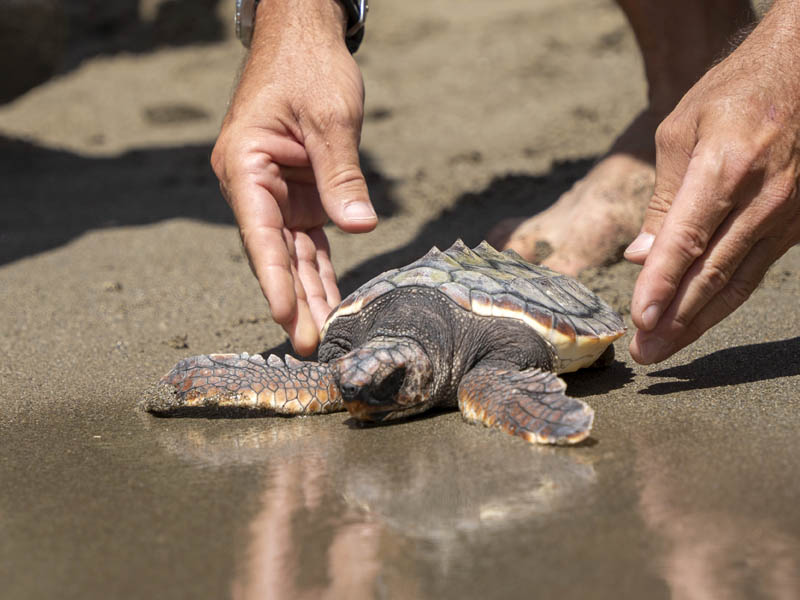



Loggerhead Turtle




















The loggerhead turtle (Caretta caretta) is a migratory marine species that can be found in oceans all over the world. It is the most abundant turtle on the Mediterranean coast and it is increasingly common for it to lay its eggs on Andalusian beaches. Since the first Spanish loggerhead turtle nest was found in 2001 in Vera (Almeria), nesting has become more frequent in the Levant and the Balearic Islands, and has also increased in the rest of the Mediterranean Sea.
In our immediate surroundings, the first clutch in in the province of Malaga was found in 2020 on a beach in Fuengirola. The high temperatures of the waters of the Alboran Sea in the previous weeks suggest an adaptation to climate change by exploring new territories, also documented in areas of the world such as Peru. Through Head-Starting programmes for their conservation, since 2024 Selwo Marina has been taking in loggerhead sea turtle hatchlings for their release into the sea when they reach optimum conditions, given that it is estimated that, in the wild, only one in a thousand survive their first year of life.
The loggerhead turtle is the largest hard-shelled turtle on the planet, characterised by its yellow-orange or reddish-brown colour and its five sections or scutes in the centre and on each side and another eleven or twelve pairs of scutes surrounding it. Although it cannot hide their head or legs inside, this shell serves as external protection. There is no sexual dimorphism to differentiate the juveniles, while adult males have larger tails and claws than females.
Loggerhead turtles spend most of their lives at sea, with certain changes depending on their age: hatchlings take refuge among algae floating on the surface, young turtles live in shallow areas of the coast or estuaries, and adults go into the open sea. They rarely venture onto land, except when females burrow into the sand to lay their eggs in nests on the beach.
Because it has a wide distribution, the widest of all sea turtles, there are a variety of subspecies with unique characteristics and, for example, loggerhead turtles in the Mediterranean are generally smaller. At the same time, this sea acts as a nursery habitat for young turtles from Atlantic populations, which feed in the Alboran Sea or the Adriatic and lay more than 3,000 nests per year on the coasts of Greece, Cyprus or Turkey.
After preparing specific facilities, Selwo Marina actively collaborates in the conservation of loggerhead turtles, in coordination with other institutions, through actions such as Head Starting, a technique that ensures survival under temporary expert care with meticulous monitoring until the hatchlings are ready for life in the sea. Thus, in 2024, 54 loggerhead sea turtle hatchlings were released into the sea, five of which were cared for by our team of experts. Also, in 2025 we took in a loggerhead turtle found stranded and nursed it back to full health.